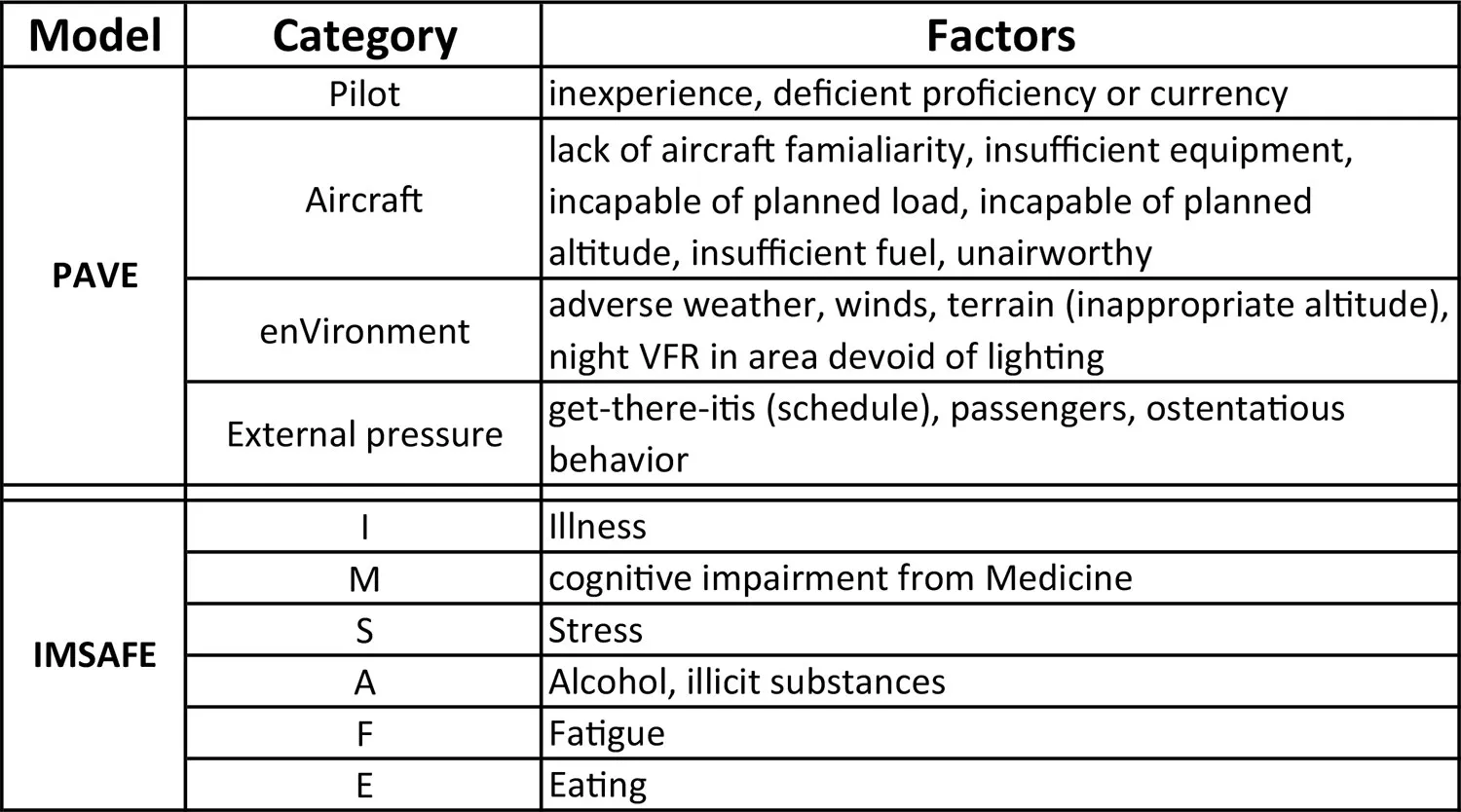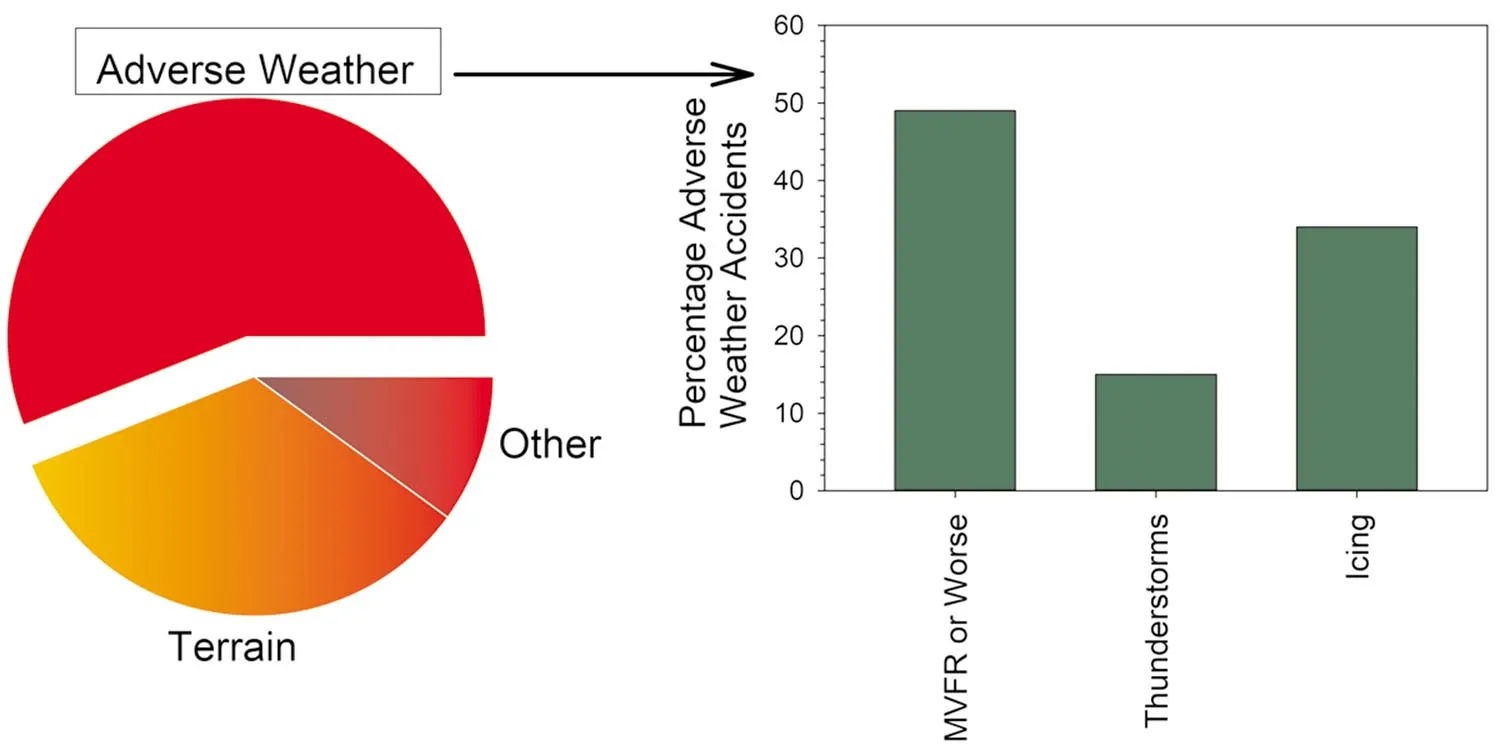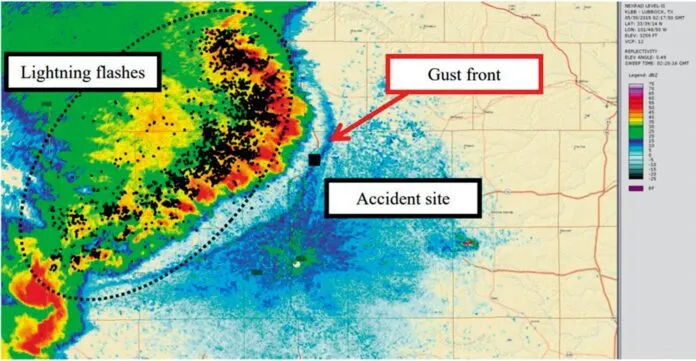General aviation hardly boasts a stellar safety record compared to our siblings flying heavy iron. This partly reflects the flexibility of the regulations governing general aviation operations compared with a much more regimented structure for the airlines. With the objective of improving safety, back in 1991, the FAA introduced the concept of sound aeronautical decision-making (ADM) practices to general aviation. Let’s look at the history of aeronautical decision-making and describe the findings of a recent study by two Embry Riddle researchers to determine the extent to which general aviation pilots have “bought in” to (or to be more exact: “ignored”) such safety practices.
Sound ADM Practices
We often say—and more often hear—that GA isn’t as safe as the airlines. But, let’s put some numbers on that. During 2018 through 2022, there were 518 fatal general aviation accidents compared with a paltry 3 for the airlines. That’s a 173:1 difference—not particularly impressive. Of course, several reasons underlie this disparity and as mentioned above, it’s partly due to the flexibility of general aviation operating regulations. For example an air carrier aircraft is prohibited from departing to its destination if the TAF for the arrival airport is forecasting weather below minimums at the ETA. But, there’s nothing illegal with a general aviation pilot undertaking this trip.
Which brings us to the need for sound ADM practices for general aviation, but do we know what that is? To quote the highfalutin language of AC 60-22, it is the “systematic approach to the mental process used by aircraft pilots to consistently determine the best course of action in response to a given set of circumstances.” This would apply to both pre-flight as to whether one should launch or stay grounded—the ol’ go/no-go decision—and in flight should something unplanned occur.
Well, the concept didn’t “take off” immediately. (No pun intended). Six years later, there was little mention of ADM in the FAA Pilot Handbook of Aeronautical Knowledge (1997 edition) and the first mention in guidance to CFIs for flight reviews (AC 61-98B) was only 11 years ago. Even now, the subject might receive short-shrift as it’s not required in flight reviews and how much a CFI can cover in the mandatory hour of ground school is limited.
Can’t Measure ADM…
So, now 30 years after its birth, to what extent are general aviation pilots subscribing to such practices? Two Embry Riddle researchers posed this question and I will brief their findings without the scientific jargon. For efficiency, let’s limit the discussion mainly to ADM in go/no-go decision making.
As a preface, I should mention that quantifying good ADM practices is difficult as there is no associated event one can measure when good ADM practices are followed. But what if the question was flipped around i.e. look at accidents (a measurable event) in which deficient ADM was contributory. Indeed, this was the path that the researchers pursued regarding go/no-go decision making by pilots.
The scientists narrowed their study to fatal accidents (spanning 1991-2019) involving private pilots flying single-piston-engine airplanes under Part 91 on personal missions—a total of 1481 fatal accidents. These accidents were then scored for poor go/no-go decision making applying the well-recognized PAVE and IMSAFE models to the information gleaned from the corresponding NTSB final reports.
Overall, of the 1481 fatal mishaps, 841 (57 percent) were scored as related to unsound go/no-go decision making per the PAVE and IMSAFE models. In other words, the pilot elected to undertake a flight when a pre-flight assessment per these ADM criteria should have been no-go. It is worth noting that the authors reasoned that the 57 percent of fatal accidents related to unsound ADM might actually be higher as some NTSB reports (especially earlier ones in the 1990s) were sparse in capturing human factors.
Now let’s dig deeper to explore which of the PAVE/IMSAFE categories were most likely to trip up general aviation pilots. Well, the environment category (“V” in the paVe schema) stood out well above the other ADM categories contributing to over half (349 mishaps) of the 841 fatal accidents. Now, this pre-flight ADM category lumps together adverse weather (impaired visibility, thunderstorms, icing), terrain (think buzzing, inappropriate altitude selection) and deficient ambient lighting (mainly night flights away from city lighting). Of these go/no-go sub-categories, adverse weather eclipsed the others, making up again over half of fatal accidents in the enVironment group.

But particularly interesting—concerning—was the large number of instrument-rated pilots who, ignoring a pre-flight forecast of marginal VFR weather (MVFR), nevertheless launched in such degraded visibility conditions under VFR with fatal consequence. In fact, of the three sub-groups comprising the adverse weather sub-category (MVFR, thunderstorms, and icing), instrument-rated pilots were most likely to incur a fatal accident in which they departed when MVFR weather was forecast (about half of the adverse weather sub-category) than if icing or thunderstorm conditions were indicated. Considering the training for the instrument ticket, this had the authors scratching their heads.
Why would an instrument pilot launch in marginal visual conditions instead of undertaking the flight under IFR? Were such instrument-qualified aviators out of currency/proficiency? Perhaps. An article (“Instrument Currency” in IFR May 2022) showed that only one fifth of general aviation pilots in the state (Texas) with the largest count of single-engine piston aircraft had performed six or more approaches in an airplane in six months; nevertheless, more than a few launched in MVFR or worse.
How else did instrument pilots get snared in forecasted adverse weather other than MVFR? The researchers found that a bit over a third of fatal accidents in this sub-category were due, at least partly, to an instrument-rated pilot dismissing a forecast for icing and perishing when the airplane—you know what’s coming—accumulated too much ice. This again raises the question as to why instrument-rated aviators elected to launch despite such forecasted conditions. Could it be they put too much faith in their de-icing systems?
It should be no surprise that only a small percentage of general aviation aircraft are certified for flight into known icing (FIKI) despite what a manufacturer claims. Remember, initial certification of much of the general aviation fleet occurred some five-plus decades past. In current Part 23 (light aircraft certification), FIKI approval only applies to airplanes certificated since 2000 (AC 91-74B). Your typical Bonanza, Cessna, Piper single certificated in the 1950s or 60s, likely won’t be. Add to that the fact that before 1973, there was no requirement, under those earlier regs, to even test aircraft in icing conditions.
The bottom line is that any non-FIKI system should, at best, only be used to exit those conditions. On the positive side, pilots appeared to do better with go/no-go decision making for forecasted thunderstorms—only 15 percent of fatal encounters in the adverse weather sub-category were ascribed to convection. That said, remember that visible separation from a thunderstorm may be insufficient; a gust front, which can invert a light airplane, can extend well beyond the visible thunderstorm (see image below) as a pilot of a Beech A36 and his family unfortunately found out in 2015.
While the enVironment category of faulty ADM-related accidents represented the largest within the PAVE and IMSAFE models, others were significant. Pilots impaired mentally or physically but failing to ground themselves (per IMSAFE) made up about a fifth of fatal accidents related to errant go/no-go decision making.
Similarly, poor familiarization with the aircraft performance also contributed to about a fifth of fatal accidents. (See the sidebar.) Surprising to the authors was that the external pressure (“E” in the PAVE model) contributed to only about 10 percent of deficient ADM-related accidents. The authors speculated that such a low fraction might very well reflect failure of the NTSB investigators to fully capture human factors related to fatal mishaps.
(Some) ADM Improvements
Let’s shift gears to the good news. Recall that pilots electing to undertake a flight VFR despite forecasted MVFR, or worse, represented the biggest killer for instrument-rated general aviation pilots. Encouragingly, there was a 60 percent decline in these types of fatal accidents over the 30-year study period. This plunge might well be due to technology (mobile devices, pilot apps). Maybe, but the authors pointed out that the biggest decrease in such accidents occurred between 1991 and 2005, before the advent of such technologies. The IPad was introduced in 2010 and ForeFlight was founded in 2007.
We’ve improved in some areas of ADM practices but we’re not there yet. Why? Well, 58 percent of fatal general aviation accidents are still due to unsound go/no-go decision making. Also, the accident rates corresponding to deficient pilot proficiency/currency (P), poor aircraft familiarity (A), and mental-physical impairment (IMSAFE) have remained static over the last 30 years. Remember let’s not get caught by the Dunning-Kruger syndrome that roughly stipulates that a person’s lack of knowledge and skills in a certain area cause them to overestimate their own competence. That might be relevant to more than a handful of general aviation pilots who get aloft a few times a year, scrape by with the bare minimum of recurrent training (two hours) in alternate years and never attend a safety meeting. Go forth and practice sound go/no-go decision-making practices to remain safe.
I limited this article to fatal accidents brought about by poor go/no-go decisions. But ADM also addresses in-flight decision making. Let’s look at an example of two highly experienced commercial pilots failing to follow sound pre-and in-flight ADM practices and losing their lives (along with a flight attendant). This accident occurred on 22 November 2004 in which a chartered Gulfstream G-III inbound to Houston Hobby airport crashed some 3¼ miles short of Runway 4.
The mission was to pick up former President George H.W. Bush to fly him and his entourage to Ecuador. The first leg would be from Dallas to pick up the passengers at Hobby. The TAF forecasted ¼ SM visibility and vertical visibility of 100 feet. Under §135.219 (charter regs), the flight would not be allowed to depart Dallas with the destination forecast below minimums—½ SM for the ILS Runway 4. But there was a loophole: Without paying passengers this leg could be, and was, flown under Part 91.
One can imagine that flying a VIP exerted tremendous pressure on the pilots. (Check external pressure per the pavE model.) But there was another important errant go/no-go decision that would play a deadly role in the approach phase of the flight. The charter operator had several Gulfstream aircraft for which the avionics were very similar with the key exception of the location of the glide slope (GS) indicator.
Of the four fleet Gulfstreams flown by the accident pilots, three had the GS indicator to the right of the attitude indicator. The fourth (the accident airplane) a “fast-slow” indicator (same size and same color as the GS indicator), which referenced the bugged airspeed (presumably VRef during the approach phase), replaced the GS indicator to the right of the attitude indicator. Over the previous six months, most of the flying by the Captain (pilot flying at the time of the accident) had been in the Gulfstreams with the GS located to the right of the attitude indicator with but one hour in the accident aircraft.
Yup, you can see where this is going. (Check pAve aircraft familiarization.) Enroute, the inbound flight was routine but things started unravelling before the Runway 4 instrument approach. The ATIS reported surface visibility of 1/8 SM and a vertical visibility of 100 feet. But, again, under Part 91 there’s nothing illegal with “having a look.” The unravelling continued with the monitoring pilot forgetting to move the ILS frequency on the NAV receiver from the standby to the active position, leaving the nav tuned to the Hobby VOR. The source window in the electronic flight display indicated VOR rather than LOC but both pilots missed that.
Perhaps the first hint of something askew was that neither pilot could get approach mode to arm. Under the Perceive, Process, Perform in-flight ADM schema this was another lost opportunity (three strikes; you’re out) to save the day by going missed or at least asking for delaying vectors. The pilot elected to fly the ILS manually during which both pilots were under the false impression that they were following the glide slope. They were actually flying the bugged airspeed per the fast-slow indicator and were well below the glide slope. When some 800 feet below the glide slope at an altitude of only 900 feet, the first officer finally switched the ILS frequency to the active position but failed to advise the captain. The glide slope was now at full deflection mandating a missed approach but neither pilot called for a go-around. Seconds later the plane collided with highway lights 3¼ miles short of the runway. —DB
Douglas Boyd practices sound aeronautical decision making in choosing whether funds should be parlayed into a night on the town with his wife, or diverting said monies to flying—fully recognizing the dire outcome of one course of action.



